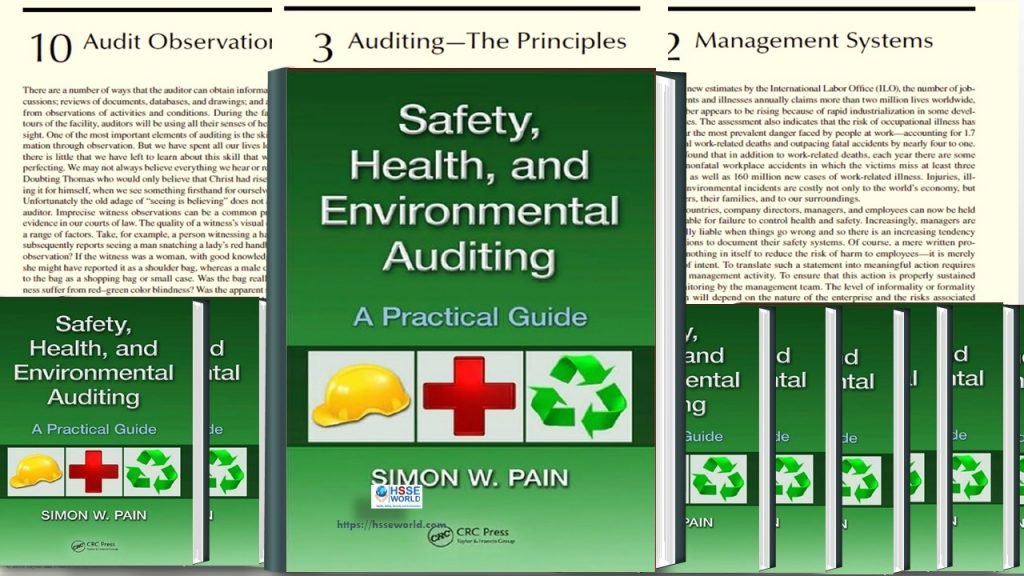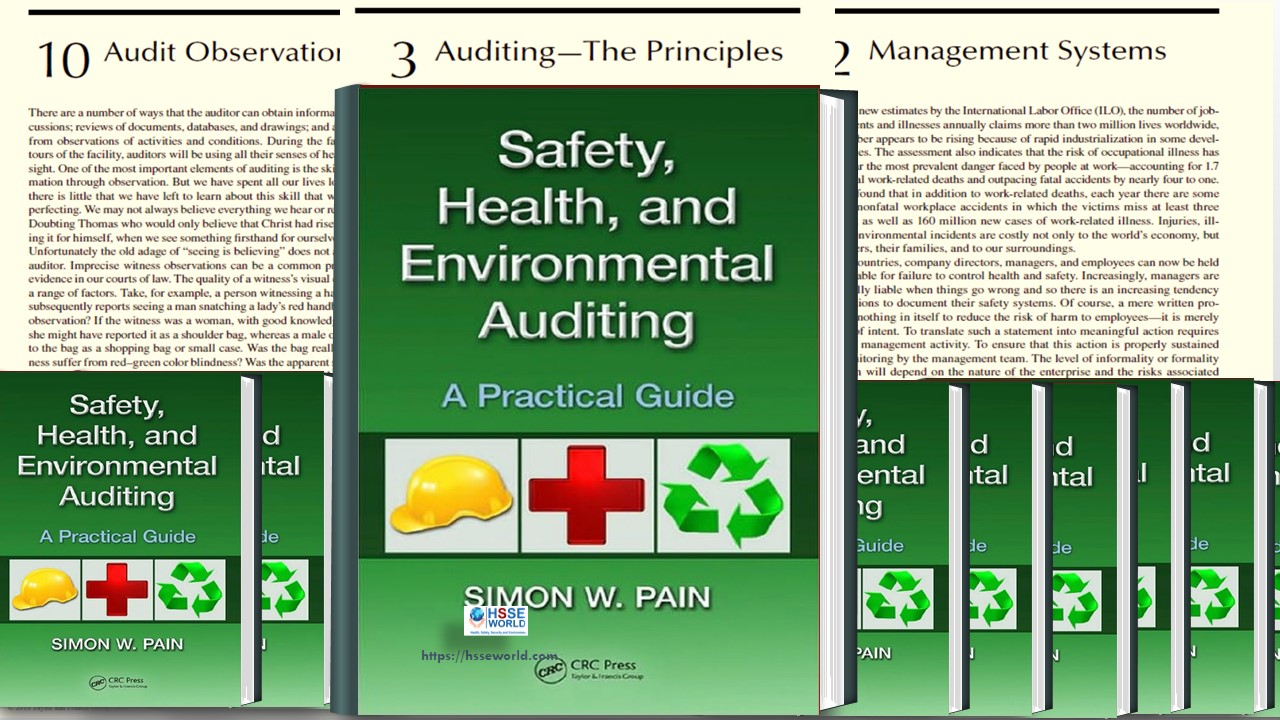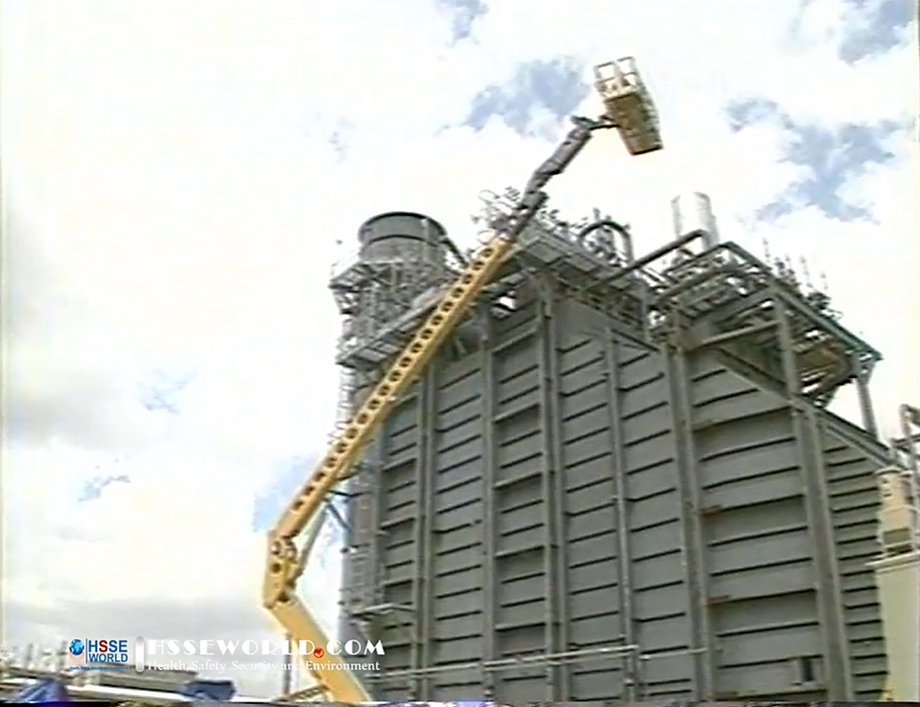Safety Health and Environmental Auditing A Practical Guide by Simon Watson Pain. The purpose of this book is to provide guidance for managers and specialists in those organizations who are committed to improving their safety, health, and environmental performance, but either is not sure where to start or cannot, or do not wish, to employ consultants to do this for them. The book is intended for those managers and safety/environmental specialists who have some level of safety, health, and environmental awareness. It has been written in such a way that it is easy to dip in and out of the short chapters to refresh your memory, prior to or during an audit.
Most people would agree that health and safety are important. Those who consider environmental protection also to be important are probably a smaller, but rapidly growing number. Unfortunately, that is often where all interest in these subjects ends. It is all too easy to say what should have happened after there has been some adverse event such as an accident, injury, or environmental release, but why cannot we be wise enough to recognize these shortcomings before things go wrong, and therefore avoid hurting either people or the environment?
Many competent organizations have extensive safety, health, and environmental instructions in place, but still, find that things often go wrong. The problem is one of human behavior. People like to make life easy for themselves and therefore sometimes ignore the instructions, or perhaps the instructions themselves are out of date. In the latter part of the last century, it was realized that this was the cause of production “quality” problems, and quality improvement processes were introduced, which culminated in such international standards as 9001, 14001, and 19011. It was realized that having good-quality instructions was not enough. What really mattered was how well people adhered to those procedures. A crucial part of a good-quality process is the checking (or auditing) step to ensure that people are complying with the procedures.

It was quickly realized that a similar checking process could be of great benefit in respect to compliance with safety, health, and environmental management procedures. In the 1980s some leading companies started to carry out environmental audits and later on branched into health and safety. The results of these audits were dramatic and often resulted in as much as a tenfold reduction in incident frequency rates. Consultants quickly realized that there was a demand to be satisfied in helping organizations improve their environmental, health, and safety performance and started to provide high-quality auditing services. The consequence for the organization was that they achieved a significant improvement in their performance, but it sometimes came with a rather large price tag in the form of consultant fees.

A “system” is “an environment exploiting, restricting and repressing individuals.” So claims the Collins Concise Dictionary. Surely this cannot be the intention of safety, occupational health, and environmental systems? Perhaps a more appropriate definition would be “a way of doing things.” However, Collins is right in suggesting that systems may not necessarily be a help; they can on occasion be a hindrance. We have all experienced the uniformed official who insists on rigidly applying outdated rules with the claim that it “is more than his job’s worth not to comply!” Nevertheless, systems are needed in organizations whether they cover the control of finances, the payment of employees, the purchase of goods, the control of product quality, or the application of safety, health, and environmental (SHE) standards. Although we may sometimes doubt it, systems are created to simplify activities that are repeated and are essential to the purpose of the organization. They are intended to ensure that we benefit from the learning and experience of others so that we do not all have to go back and reinvent the activity from first principles. Even when formal systems do not exist, it is human nature for us to want to make things easy for ourselves, so we often tend to devise our own way of doing things.
Contents
The Contents of Safety Health and Environmental Auditing
- Elements of a Good Safety, Health, and Environmental System
- Management Systems
- Auditing The Principles.
- What Makes a Good Auditor
- The Standard
- Audit Preparation
- Protocols and Checklists
- The Entry Meeting
- Industrial Hygiene Simplified
- Area Familiarization
- Audit Observation Skills
- The Informal Discussion
- Statistical Significance
- Occupational Safety and Health fundamental principles
- The Importance of Verification and the Audit Trail
- Observations and Noncompliances
- Documentary Review
- The Exit Meeting
- Audit Uniformity and Credibility
- Auditor Training
- The Health and Safety Handbook
- Managing Auditee Expectations
- Auditing and Its Relevance to Regulatory Compliance
- Reporting Quantitative Assessment
Download the book
Safety Health and Environmental Auditing
More Downloads
- E-Books: Healthcare Hazard Control & Safety Management
- E-Books: Safety, Health and Working Conditions Training Manual
- E-Books: Energy Efficiency in Water and Wastewater Facilities
- E-Books: Fire Service Features of Buildings and Fire Protection Systems
- E-Books: Evaluation of Fire Safety free download
- E-Books: PPE for Chemical, Biological, and Radiological Hazards free
- E-Books: Changing the Workplace Safety Culture free download
- E-Books: Site Emergency Planning Workbook
- E-Books: Load Restraint Guide
- E-Books: Essential Practices for Creating, Strengthening, and Sustaining Process Safety Culture
- E-Books: System Safety Engineering and Risk Assessment
- E-Books: Permit-Required Confined Spaces
- E-Books: Is it Safe to Enter Confined Space?
- E-Books: 5-Minute Workplace Safety Talks
- E-Books: Safety Culture and High-Risk Environments
- E-Books: Practical Guide to Industrial Safety
- E-Books: Slip, Trip, and Fall Prevention for Healthcare Workers
- E-Books: Health and Safety at Work Key Terms
- E-Books: Fundamentals of Process Safety Engineering
- E-Books: Gas Detection Hand Book
- E-Books: Occupational health and safety management systems ANSI-AIHA-z10-2012
- E-Books: Hot Work on Drums and Tanks
- E-Books: Human Fatigue Risk Management
- E-Books: Guidelines for the provision of facilities and general safety in the construction industry
- E-Books: Handbook of Training in Mine Rescue and Recovery Operations ( 2021)
- E-Books: Code of Practice for the Safe Use of Lifting Equipment – Edition 9 (Nov 2019)
- E-Books: Free Forklift Health and Safety Best Practices Guideline
- E-Books: Handbook of Hazardous Chemical Properties
- E-Books: Human Performance Improvement through Human Error Prevention
- E-Books: Principles Of Fire Risk Assessment In Buildings
- E-Books: Investigation of Occupational Accidents and Diseases
- E-Books: Radiation Protection and Safety in Industrial Radiography
- E-Books: Basic Guide to System Safety, Third Edition
- E-Books: Food Safety Management-A Practical Guide for the Food Industry
- E-Books: Safety identification: Escape and evacuation plan signs- ISO 23601
- E-Books: Safety at Work
- E-Books: The Safety-Critical Systems Handbook 4th edition
- E-Books: Fundamental principles of occupational health and safety
- E-Books: Fire Safety Risk assessment Guide – Sleeping Accommodation
- E-Books: Mental health at work series
- E-Books: Live Fire Training: Principles and Practice
- E-Books: Pre-Startup Safety Review Guide
- E-Books: Fire and Emergency Drill Manual and Building Inspection Guide
- E-Books: Health and Safety: Risk Management 5th edition
- E-Books: Fire Protection systems -Third edition 2021
- E-Books: Fire Safety Logbook templates
- E-Books: From Accidents to Zero
- E-Books: Electric Safety Practice and Standards
- Your steps to chemical safety
- E-Books: Ergonomics and Psychology Developments in Theory and Practice
- E-Books: HAZOPS Should BE fun-The Stream-Based HAZOP
- E-Books: Safety Health and Environmental Auditing
- E-Books: A Quick Guide to Health and Safety
- E-Books: Occupational Ergonomics A Practical Approach
- E-Books: Job Hazard Analysis A Guide for Voluntary Compliance and Beyond
- E-Books: Electrical Safety of Low Voltage Systems




